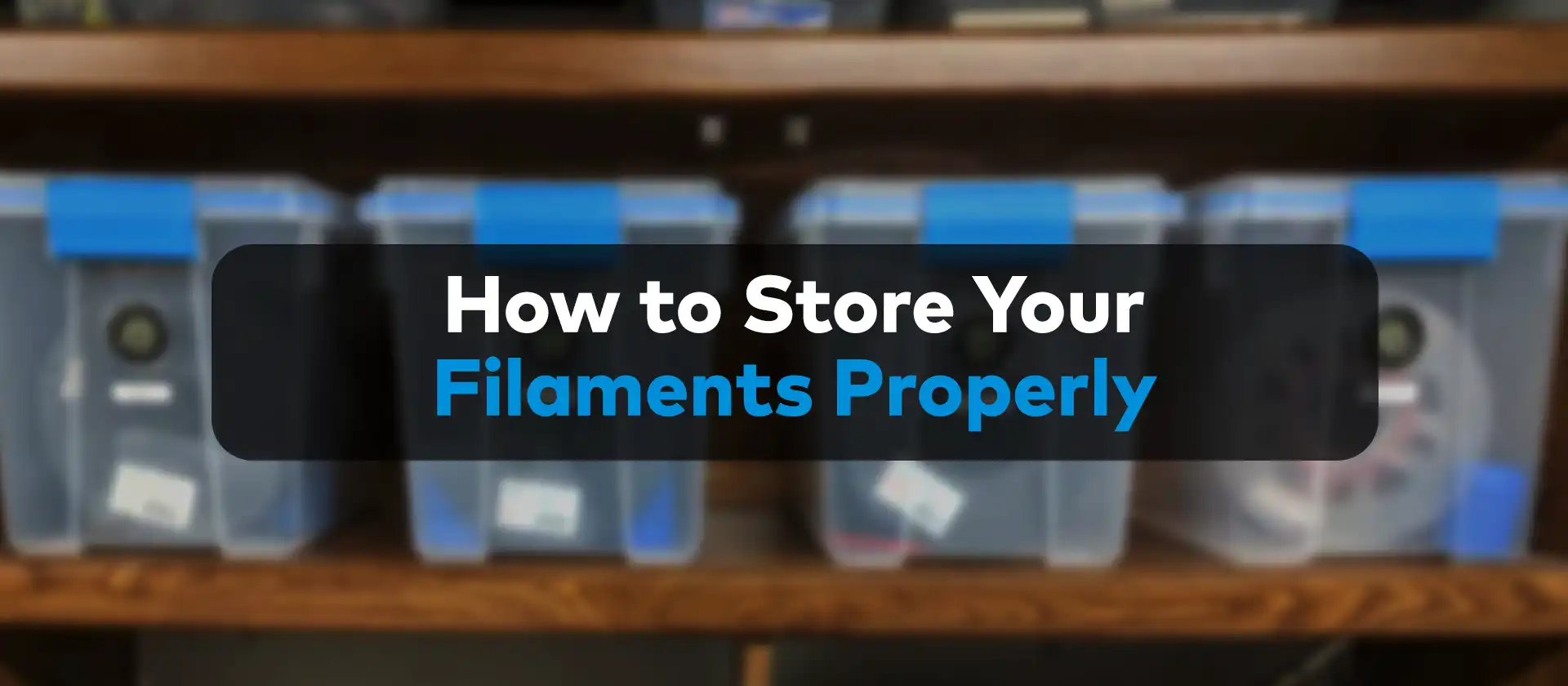
How to Store Your 3D Printer Filaments Properly
Different materials interact differently with dust, air, and moister. Depending on the material, your filaments need to be conserved and stored properly in specific ways to be able to conserve their quality and physical properties.
While leaving a filament out in the open overnight won’t have a detrimental effect, suboptimal long-term storing conditions can decrease the consistency and quality of your filament and cause problems like stringing. So, proper conservation can help 3D printer users cut costs by allowing them to use the same spool of filaments they bought months ago.
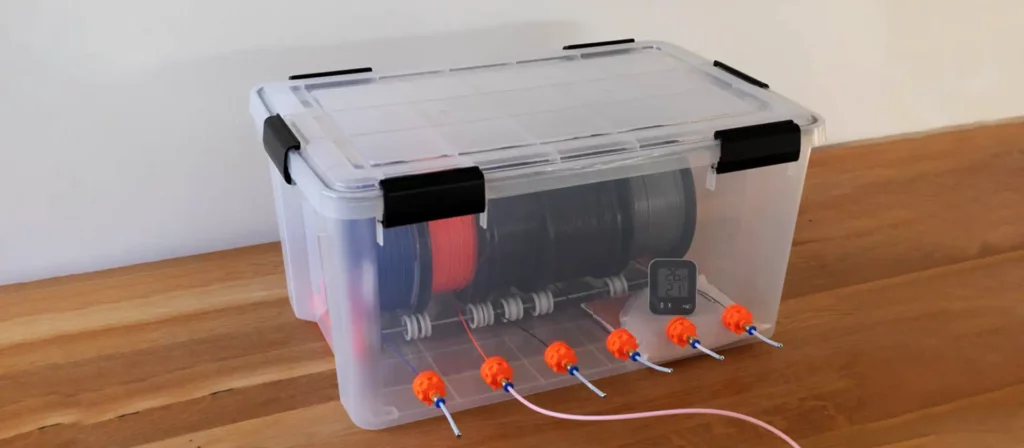
Why You Should Conserve Filaments
Some people who don’t use their 3D printers that often buy a couple of spools, then don’t use them for a while. When they try to print using those filaments in the future, they can notice a drop in quality and see that the filaments are more brittle than the last time they used them or cause problems like bubbling and stringing.
Some others buy their filaments in bulk because it makes financial sense and leave the spools to gather dust in a warehouse just to find the improper humidity in the room completely ruined the materials.
Bad storing conditions can cause;
- Brittle filaments, that break on the spool randomly,
- A change in the diameter of the filament,
- Altered physical properties in filaments that will force you to use different settings,
- Decreased hot end and nozzle service time,
- Problems like stringing, oozing bubbling or popping.
To prevent this from happening to you and make sure that your filaments give you the same quality as the day you bought them, you should always know which materials require certain storing conditions.
For more on the basic properties of different filament types: Filaments 101
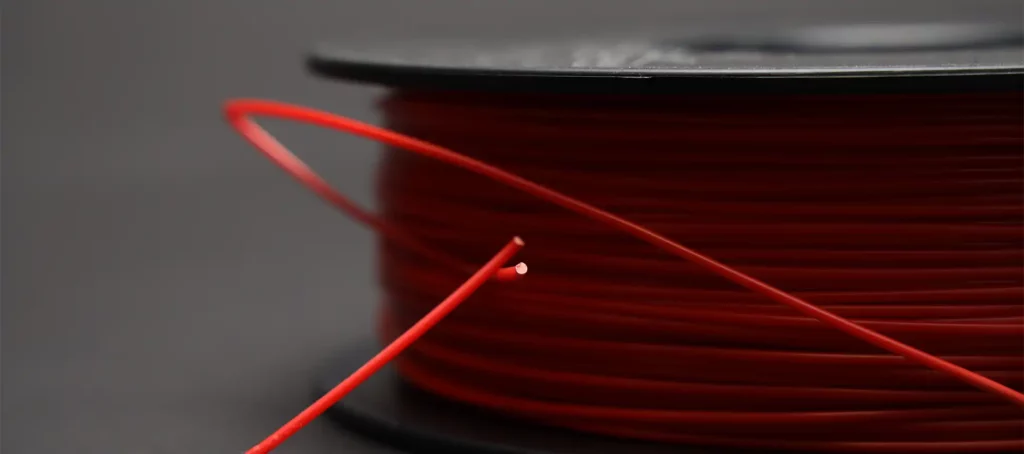
What Damages Filaments?
We mentioned improper storing conditions, but what makes those conditions improper? What should you look out for when you are storing your filaments? There are a couple of things you should avoid with every filament you own and those are;
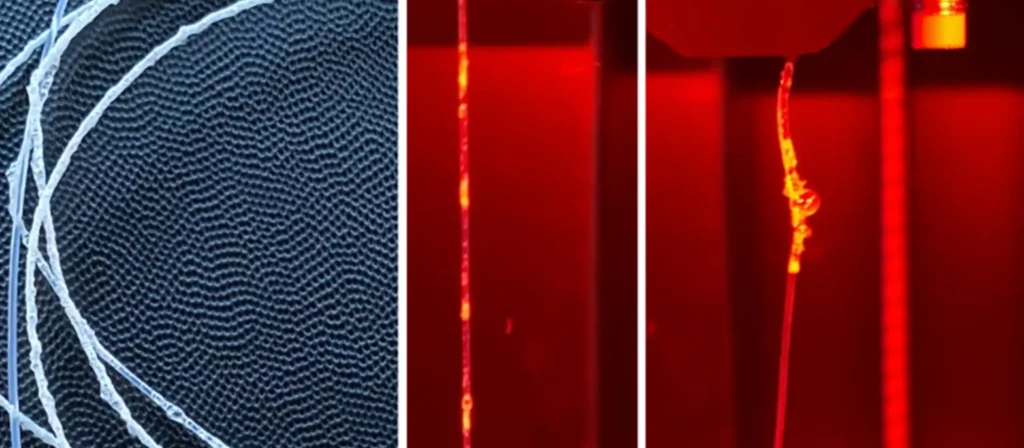
Zaxe Nylon Filament drying experiment: Preserved in a high humidity environment.
High Humidity
Plastics in general have a bad habit of soaking in the humidity in the air and swelling up. This can increase the filament diameter, decrease the quality of your prints, or cause malfunctions in the hot end. You should avoid high humidity at all costs to prevent filament degradation.
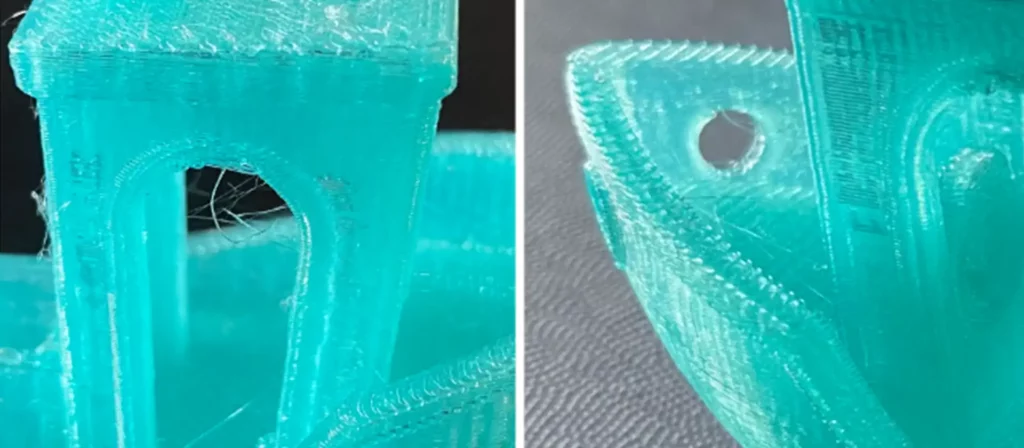
Zaxe PETG Filament drying experiment: Stringing observed in the print.
Moisture
Humidity and moister are similar but not exactly the same thing. You can store your filaments in a place where the humidity is low and still have problems with moister in places where there is a chance of liquids spilling around. Or when you store your filament in a warehouse and there is water leakage on rainy days. This will have a quicker negative effect on your filaments than with humidity and must also be avoided.
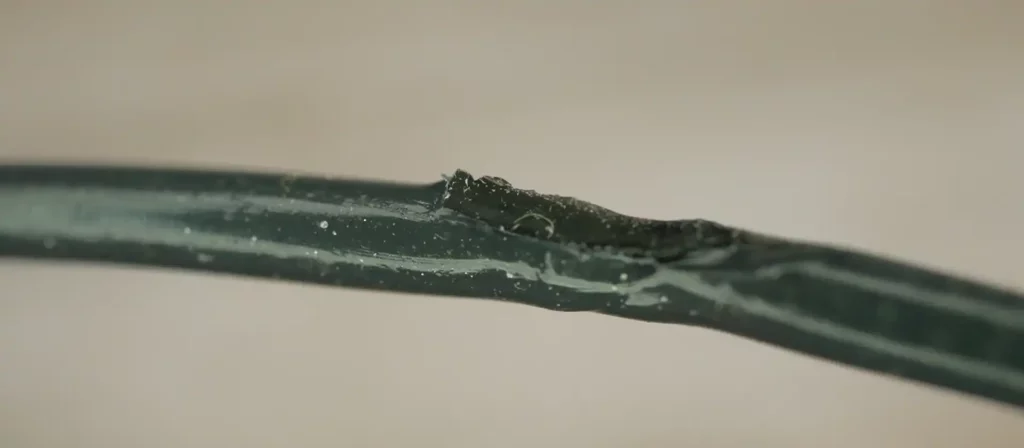
Sunlight
You are more than likely not storing your filaments outside under the sunlight, but even the sunlight that comes in through your window can damage your filaments. If filaments that have a very low melting point, such as PLA, are left under the sunlight for too long, they can get too hot and degrade on their spools and lose their integrity.
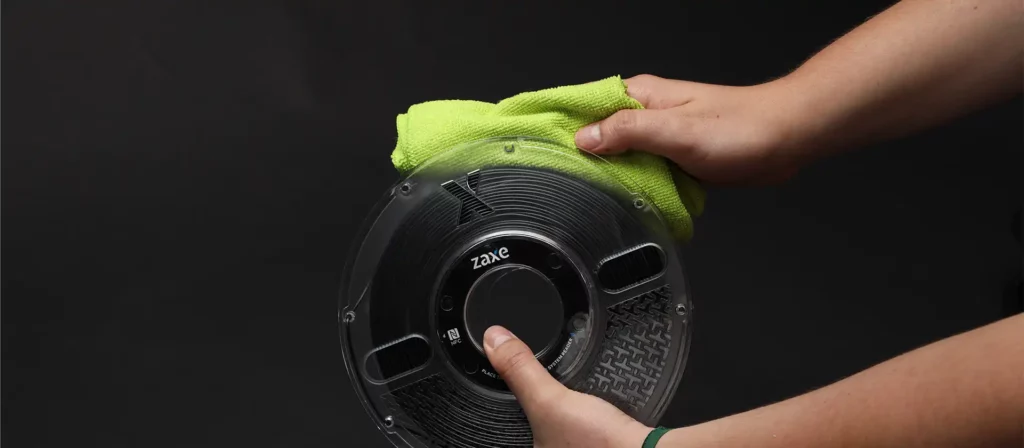
Dust
Any type of contaminant will be bad for your filament, but dust, hair, and other particles that might be around the storage area especially have a good chance of slipping through the cracks and getting stuck around the filament spool. Foreign objects around the filament can cause your hot end to get damaged in the long run.
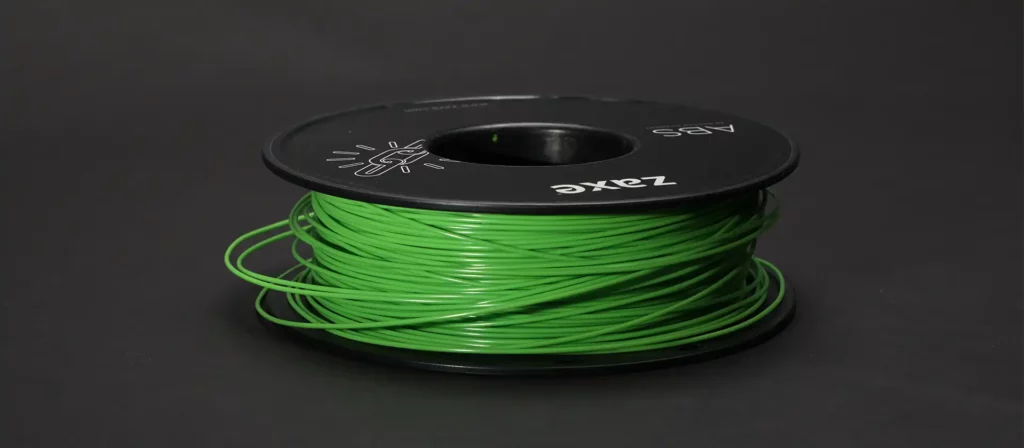
Entanglement
One of the first habits you should learn about 3D printing is to never let your filament get loose in its spool. When your filaments get loose, it has a chance to get tangled around the spool and itself. We even advise our users to cut the parts of the filament where it got loose or re-spool the loose parts properly to prevent entanglement during print.
How to Conserve Filaments?
The optimal storing conditions can depend on the filament but some rules for proper conservation will stay the same among a lot of materials. If you have a vast array of different material types in your possession and don’t have the space to store every one of them individually, these will be the general rules of filament storing.
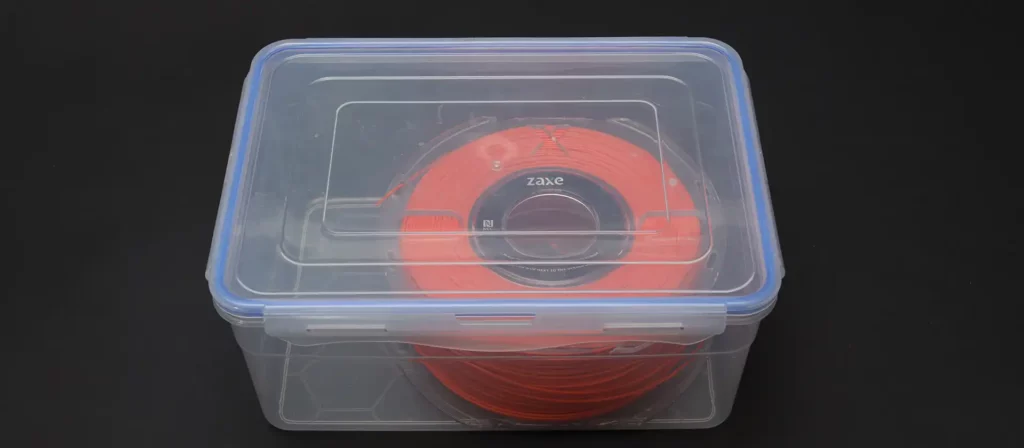
Storage Boxes
There are great filament storage boxes on the market that seal up tightly and prevent any air, humidity, dust, or moisture from getting near the spools. You can use any other box that seals in tight enough like a Tupperware or pet food storage boxes, but investing in a proper storage box can pay off in the long run. Filaments that are stored in a sealed box will have a longer service life but still not last forever.

Vacuum Bags
Another thing that works great for storing your filaments is vacuum bags. They have the added benefit of sucking in the air and keeping your filaments interaction with the outside world to a bare minimum. Vacuum bags are relatively affordable and can help you conserve your filaments properly longer than an average store box on the market.
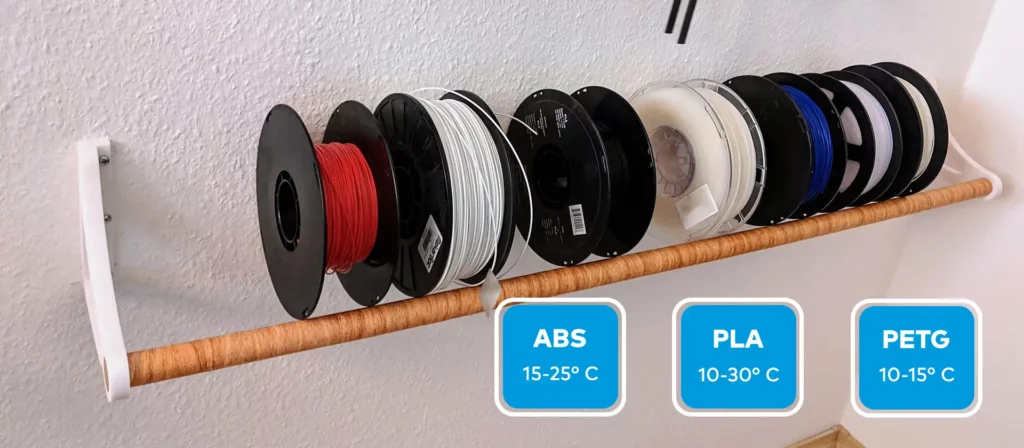
Proper Room Temperature
This is where things get a little complicated for people who have several types of filaments and want to store them together. In places where the temperatures get really hot in the summer and rooms that are not air-conditioned, your filament can get damaged because of the heat even in a good storage box. There is not much you can do about this other than moving the filaments to a room with temperatures that they can tolerate. Optimal temperatures for different filaments are;
- 15-25° C for ABS
- 10-30° C for PLA
- 10-15° C for PETG
While these are the optimal temperatures, your filament won’t melt away immediately if you put ABS in a 26° C room. As long as they are stored safely and the room is not extremely hot or extremely cold, your filaments should be fine for the foreseeable future.
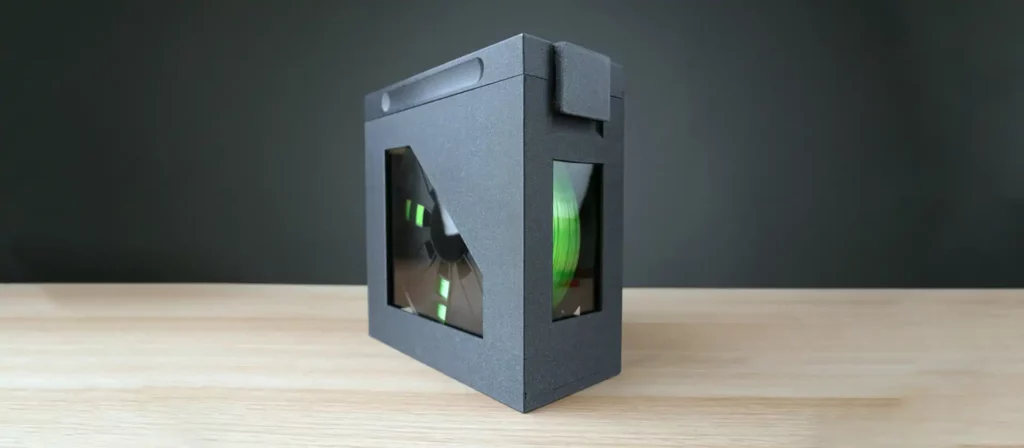
A Dry Box
There are dry boxes out there developed by different companies that are specifically designed to provide the best storage conditions for your filaments. The air and humidity in the box are controlled by the box itself and can be adjusted for different material types. Keep in mind that these boxes usually can store only one filament at a time, so they probably won’t be a good option for people who buy their filaments in bulk unless they want to make a considerable investment
If you need any help with the process, MihaiDesigns has a great video on his Youtube channel that you can use as a guide.
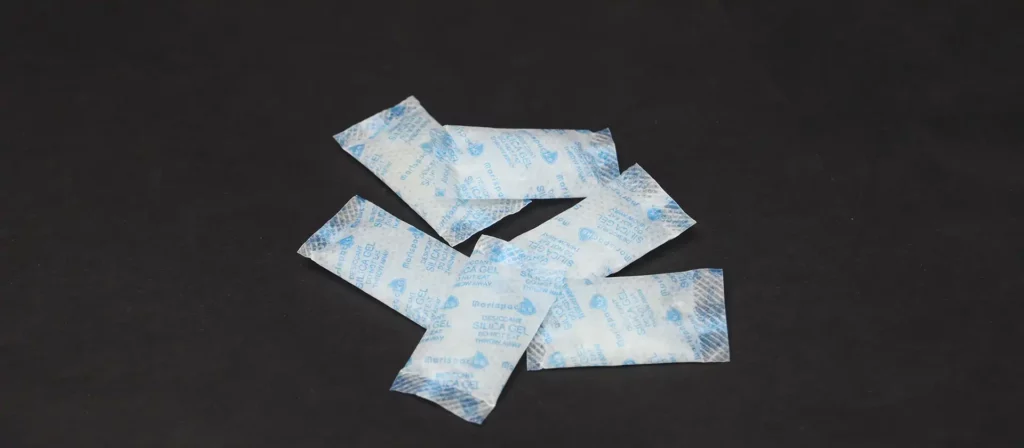
Silica Gel
To prevent any moisture and humidity damage to your filaments, silica gels are also an exceptionally well tool. Usually sold in the form of tiny balls, silica gel absorbs most of the humidity and moisture in the air and protects your spools from degrading. This method works well together with other methods like storage boxes and vacuum bags to enhance the effect of those methods.
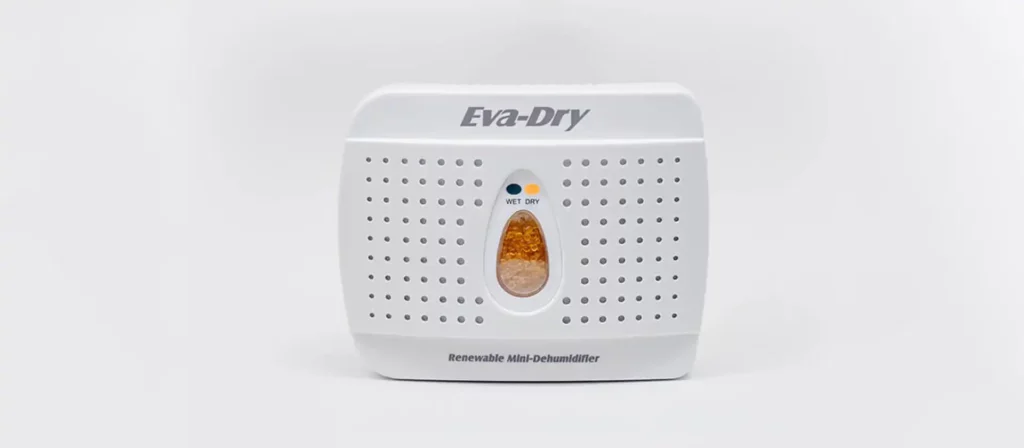
Mini Dehumidifiers
There are also pretty budget-friendly mini dehumidifiers on the market that you can use to control the humidity more effectively. These mini dehumidifiers also use silica gel to suck the moisture in the air and keep your filaments completely dry. You will have to renew the silica gel inside the dehumanizer occasionally to keep it working effectively.
A Couple of Tips
If you use any of these methods or use them together you will increase the shelf life of your filaments. But what if it is too late for prevention? Can you bring back the filaments that were already out in the open for a long time and still get good quality print with them? Actually, yes, to a certain degree. There are tried and true methods that will increase the performance of the filaments you left out for a long time.
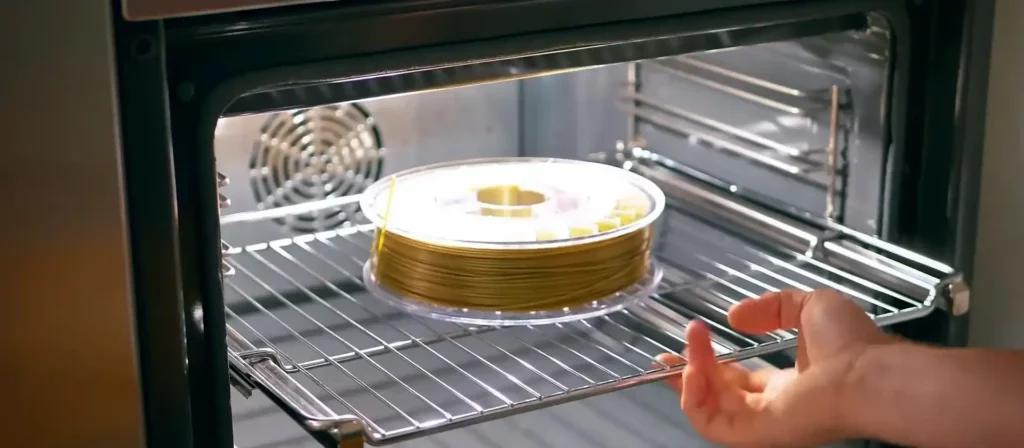
Drying Filaments in an Oven
Believe it or not, you can actually dry your moist filaments in a standard kitchen oven pretty effectively. The heat from the oven can evaporate the excess water that was soaked by your filament and increase the quality of your filament and allow you to use them for better prints.
The optimal oven temperature for this process will be 40-45° C for your PLA filaments and around 80° C for ABS. The thermometer in your oven might not be accurate, so using a second one can be the smart thing to do.
Be cautious, making the oven too hot or leaving the filaments in the oven for too long might cause the filaments to melt or release toxic particles in the air.
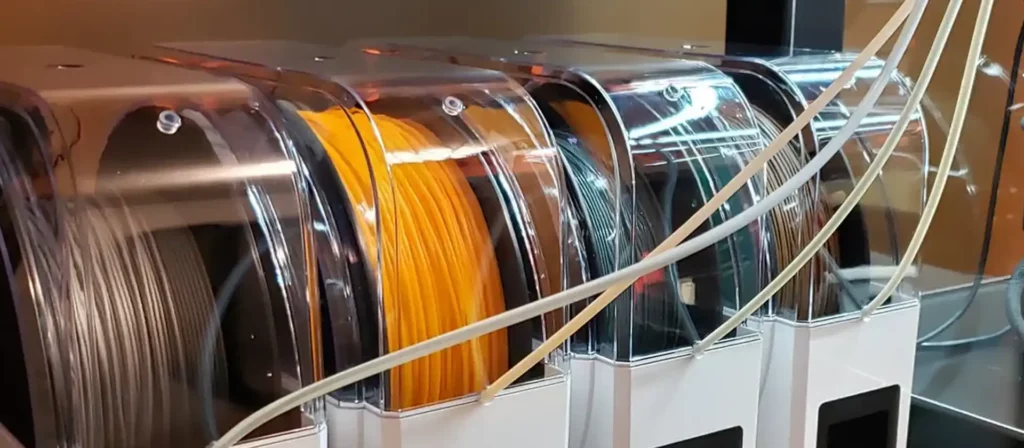
Filament Driers
If you don’t mind spending a little more money on your filaments, there are also great filament driers on the market that were designed specifically for 3D printing filament spools that can improve the condition of your older spools more safely than the kitchen oven drying method.
Let’s say you spilled a glass of water on the filament on your desk. You can easily put the filament in the drier, adjust the setting and dry it evenly to restore the filament’s quality.
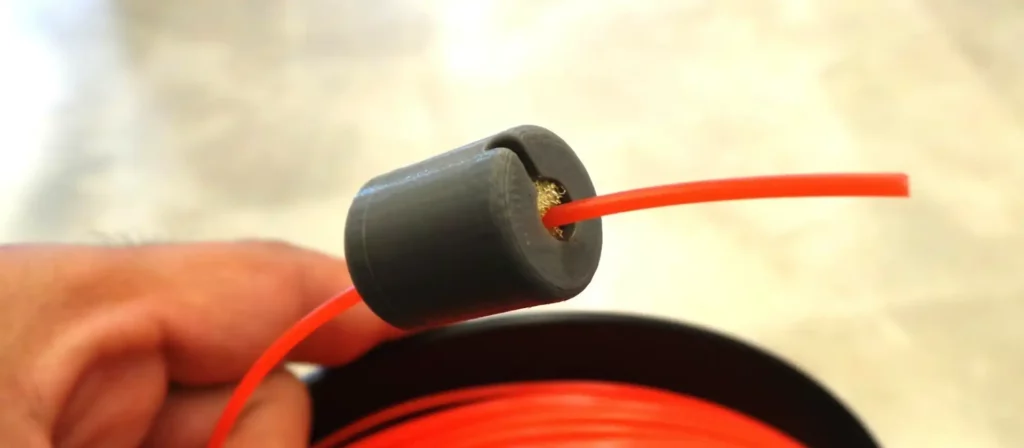
Dust Filters
If you don’t have the option to store filaments in closed spaces, you already have a couple of spools that were left out in the open or don’t want to bother with protecting your filament spools from dust, a dust filter can also help you print with old filaments.
You can buy one for a very reasonable price or even 3D print it yourself from a model you find online. Filters have a dusting material inside with a thin space that the filament gently squeezes through. The dusting filter cleans the dust, hair, and other particles and decreases the chance of something bad happening with the filament.
To Summarize
As long as you keep your filament’s interaction with the outside world to a minimum degree and store them in optimal conditions based on the material, you will likely experience no issues. Some of the items we have listed might feel like too big of an investment just for conserving and storing filament but in the long run, they should pay for themselves in time because they will help you spend less money on filaments that you buy to replace the bad ones.
Making an effort to keep your spools safe from foreign factors is a good habit to have when you are just started 3D printing. In time, people tend to get a little more frivolous in how they treat their filaments. But if you give enough care to your filaments, they tend to pay you back with great prints.
